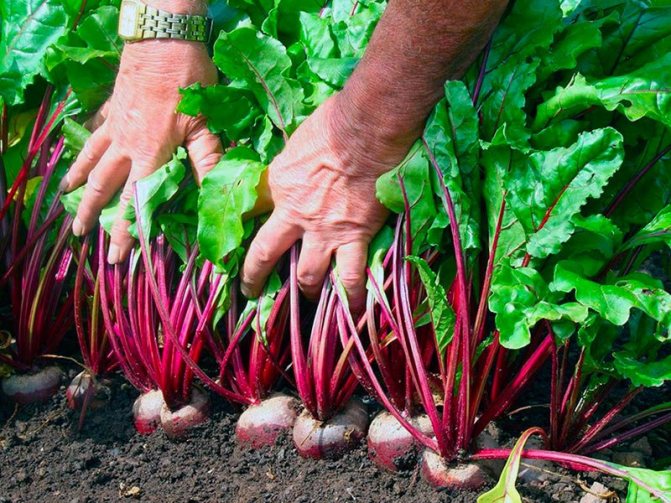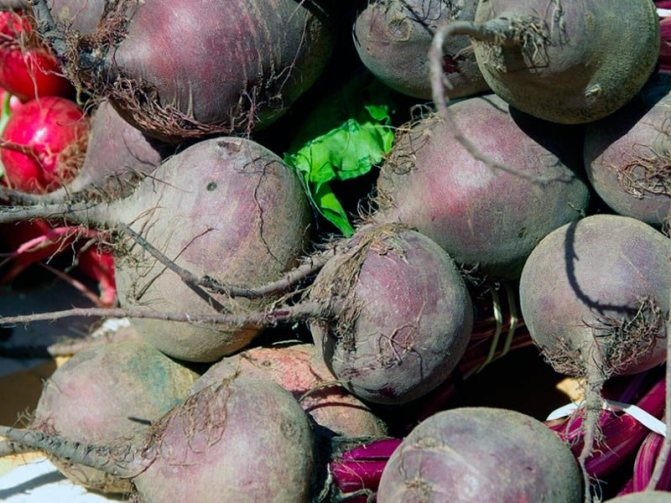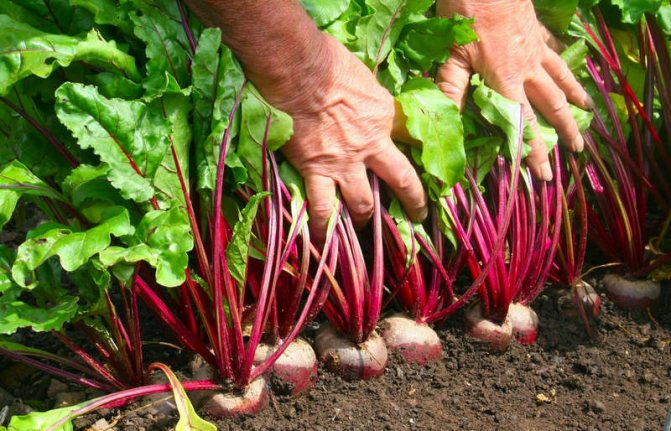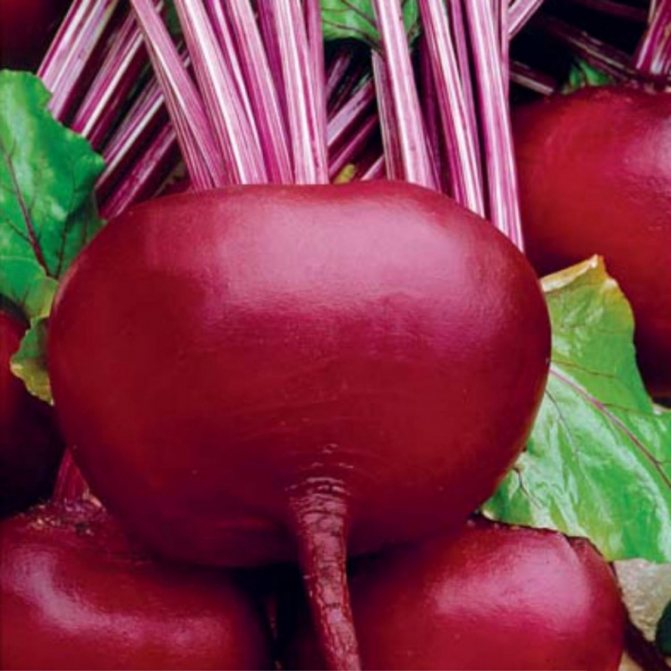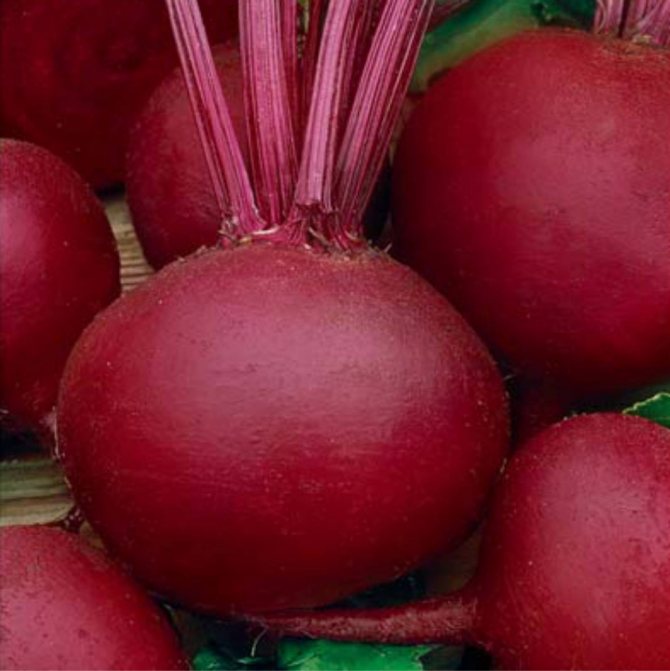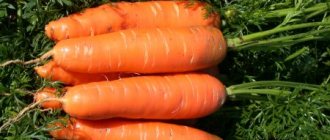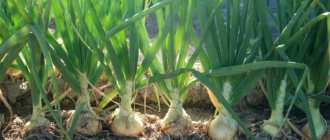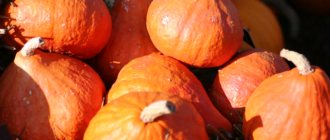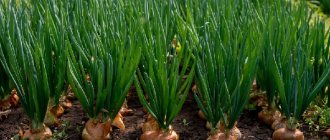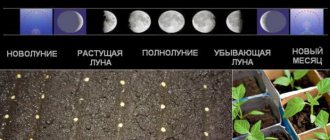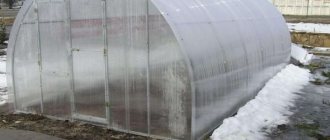The importance of cleaning
If you know which variety the vegetable belongs to, it is easy to determine the digging time. The manufacturer indicates detailed information on each package with seeds. In addition, every gardener should be guided by the main criterion - the hardness of ripe fruits. It's easy to check.
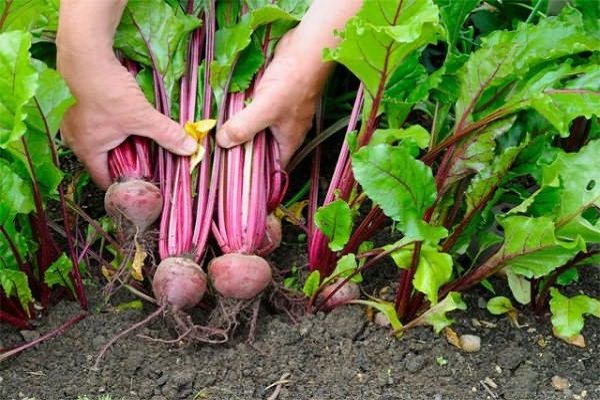
Ignoring the timing of harvesting leads to the fact that the vegetable grows again. Root crops are covered with light stripes. Later, young roots are formed on them, which also have a white color. The final sign of the re-development of a culture is flowering.
The appearance of such factors signals that the vegetable is ready for harvest. Light stripes can form not on the tops, but much lower. A person may not even suspect in what state of maturation the plant is. To see them, you need to pull the root crop out of the soil.
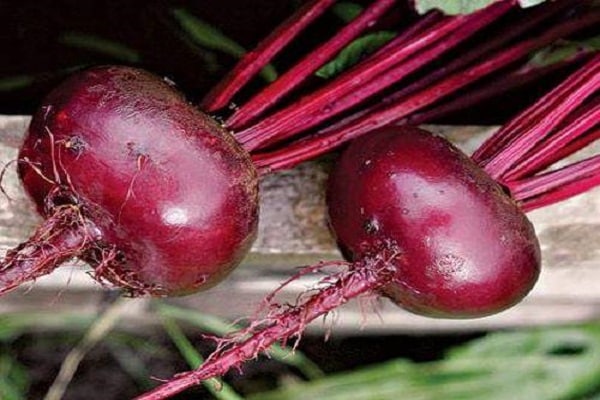

Gardeners are advised to make a careful inspection of the land plot. Determine if the tops of the fruit are sticking out of the ground. If the vegetable continues to grow, then it is not yet ready for digging. Therefore, the cleaning of the garden is postponed to a more favorable time.
In this case, the soil is loosened and fertilizers are applied. It can be potassium salt, urea, or superphosphate. They also do not forget about systematic watering of culture.
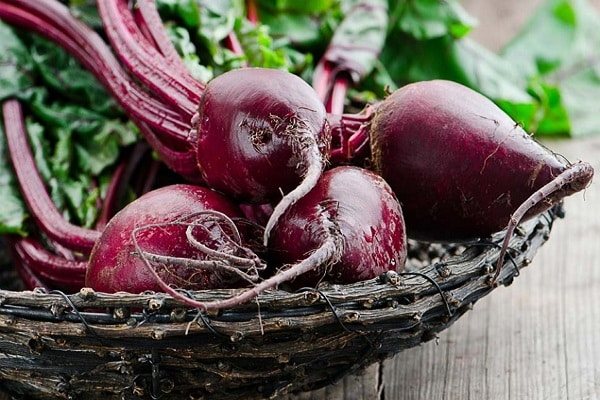

Siberia
Although the beet is considered a demanding plant, it grows well in Siberia with short summers and cold winters. In this area, table and fodder crops are grown. A guaranteed yield is obtained if the root crop is planted by seedlings, and not by seeds.
In order for the vegetables to ripen before frost, for planting, you need to choose varieties with a ripening period of no more than 100 days. Suitable for Bordeaux 327, Siberian flat, Cold resistant, Incomparable. The timing of harvesting beets in Siberia is usually the same throughout the territory - ripening occurs by September, so at the beginning of the month you can start harvesting.
Collection rules
At first glance, the process is very easy. But, it requires compliance with a number of important nuances and taking into account the peculiarities of the culture:
- Beets are harvested in dry weather without precipitation. The slightest amount of moisture negatively affects the shelf life of the fruit.
- Root crops are pulled from the ground with your hands, gently adhering to the tops. This will help prevent damage to the vegetables during harvesting. High soil density requires the use of a fork or shovel. You need to dig in the vegetable carefully so as not to cut it. The presence of cracks causes the development of fungus and infection of neighboring healthy fruits.
- The dug beet is freed from the tops. To do this, use pruning shears or ordinary household scissors. It is recommended to leave a small tail, about 1 cm. If the root is long, it is also trimmed.
- The harvested crop is dried by laying out under a canopy in the open air. As the fruit dries, the beets are turned over to the other side.
See also
When and how to properly plant beet seeds in open ground? Read
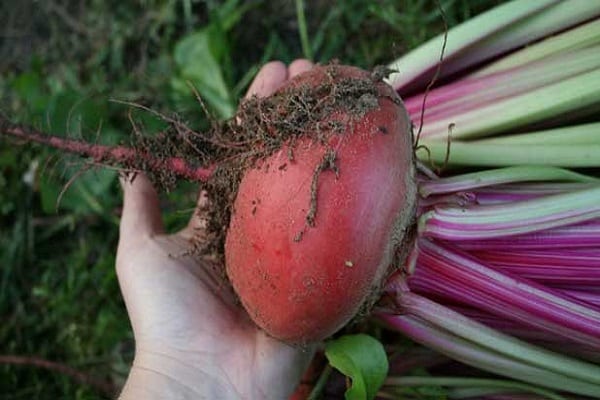

Before the roots are placed in storage, they are sorted, separating large and small separately. It is better to throw away vegetables with signs of the disease right away so that they do not infect the neighboring ones. Store damaged ones separately and use them as soon as possible. The storage can be a cellar, basement or pantry.
When to harvest beets: guidelines
To determine the appropriate collection of root crops, you should focus on the main points. First of all, this is the time of planting in the ground and a crop variety. Each species has a certain ripening period. This process can be changed by weather conditions.
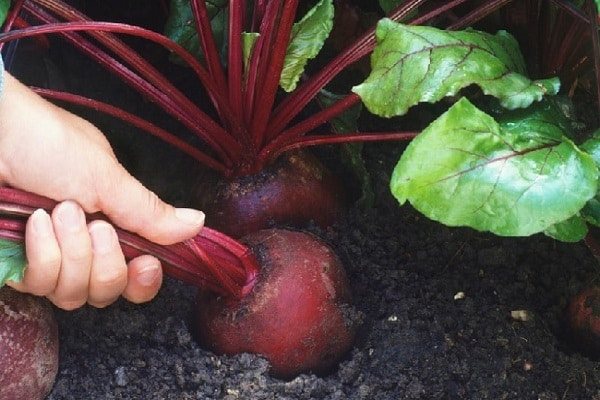

In recent years, the weather has not been stable at the same time. Therefore, cleaning should be done based not on the dates, but on the appearance of the vegetable. You can collect beets from the garden in such cases:
- The main role is played by the growing season, which is different for each specific variety. This is stated by the manufacturer on the packaging. Early maturing varieties are ready for harvesting 65–85 days after planting. As a rule, this falls on the beginning of August. Mid-season and late varieties ripen no earlier than 3.5-4 months.
- Signs of maturity can be identified by their appearance. If the root matures, the tops will gradually wither. The lower leaves turn yellow, and after a while they dry out completely.
- The timing of harvesting is determined by the shape of the root crops and their size. Moreover, they must correspond to the characteristics of the variety.
- The appearance of growths in beets.
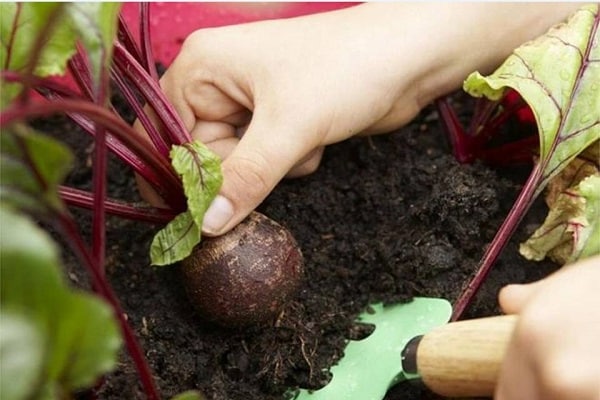

The signal for urgent harvesting of beetroot fruits is freezing. The rule is gaining relevance when it comes to late-ripening varieties. In this case, the roots are dug out even if they are not quite ripe. If the top of the vegetable gets stuck in frost, this will prevent it from being stored in the cellar in winter.
It is undesirable to remove vegetables from the garden before the specified time. Cool weather in late summer and early autumn promotes active vegetation. As a result, the mass of the fruit increases. During this time, the soil allows root crops to accumulate valuable vitamins and minerals.
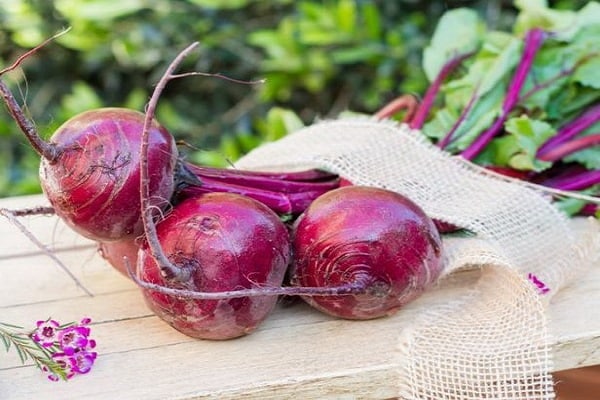

When to remove beets from the garden for storage: a guide to carrots
A suitable reference point for determining the ripening of a beet is carrots. People who know gardening recommend digging up the vegetable before harvesting the carrots. Beets are much larger and protrude significantly above the ground. This makes them vulnerable to the first frost.
Early varieties will grow in July. The size of a mature root crop ranges from 5 to 10 cm. Second-class varieties reach 15 cm.
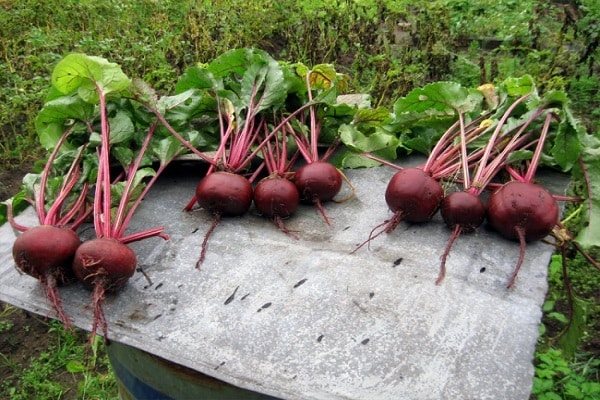

Features of the vegetable
Breeders have bred various varieties of root crops that can grow even in unfavorable conditions. Even novice gardeners will be able to cope with this task. When choosing a variety, you need to take into account the climate. The following nuances will allow you to make the right choice:
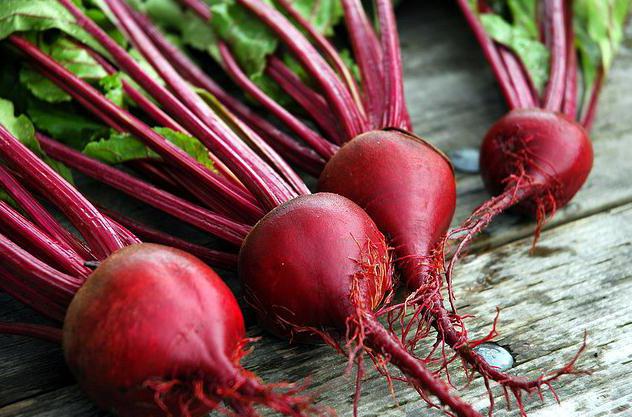

- In the northern part of the country, where summers are short and cool, it is advisable to grow mid-early and early varieties. They grow up to 100 days, so the harvest will be able to be harvested by the cold.
- There are frost-resistant varieties of beets that are planted before winter and immediately after the snow has subsided. Harvesting of these varieties of beets takes place at the end of July. Compared to equal beets, the frost-resistant species is stored better.
- If you need to keep the beets fresh throughout the winter, you need to purchase late and mid-season varieties. You need to harvest in September. Preservation depends on the concentration of sugar in the root crop. It is by September that this figure will be normal.
The timing of harvesting beets can be different depending on the variety, growing climate. This procedure is carried out in the same way. Storage is no different either.
Late varieties
Beets tolerate cold without any problems. Therefore, a temperature of 2-3 ° C is not a hindrance to full development. Of course, we are talking about late varieties. Table beets have a later date for digging, they are harvested in the middle of autumn. The late varieties are much tastier than the early ones.
See also
When and how to water beets with salt water to keep them sweetRead
In addition to its taste, the culture is distinguished by its good yield. The collection of root vegetables depends on the size. Small ones are left in the ground until fully ripe, and large ones are chosen immediately.It will take some more time for the small fruits to grow up and can be harvested.


You can dig up beets according to the lunar calendar. Harvesting fruits is best done with the waning moon. There is no specific date for each year, as it is constantly changing. This is mainly autumn, closer to mid-October.
The date of collection of root crops depends on the place of germination. Moderate climates tend to ripen faster than dry or cold weather.
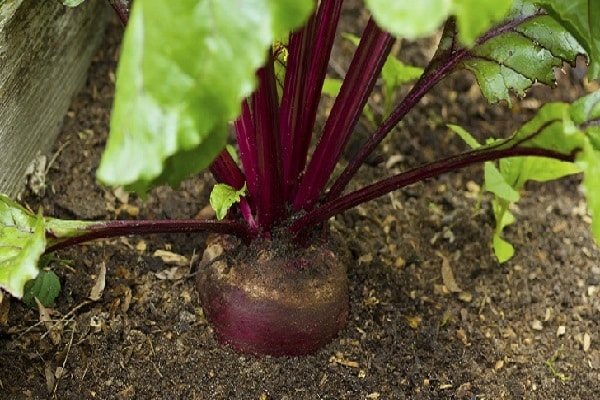

Middle zone of Russia
The popular mid-season varieties include Bordeaux, Crimson ball, Cornell, Detroit, Nero, Bikores. Their ripening time is 90-100 days. The period for harvesting beets in the middle lane depends on the planting: if this was done in the 2nd decade of May, then the collection is carried out from mid to late August.


When sowing at the end of May, vegetables can be left in the garden for another couple of weeks. Ripening of late-ripening varieties (Cylindra, Torpedo, Odnorostkovaya) occurs within 100-130 days, so the harvesting of beets begins in late August or mid-September.
Beet storage rules
When to dig up beets for storage is not the only question of interest to gardeners. A properly prepared crop can be stored little in the wrong room. It is important to create the appropriate conditions for this:
- Beets harvested from the garden can be stored in the refrigerator for a short period of time. Thus, a fresh vegetable is always kept at hand.
- Root crops that grow outdoors are usually stored in a basement or cellar. The place should be cool and dry. Temperature range from 0 to 3 ° C. The indicator should in no case fall below.
- The floor and walls in the room must be free from moisture penetration. Make sure that rodents do not start and poison them in time.
- Root vegetables can be packaged in boxes, baskets or bags. For better storage, they are sprinkled with sand or sawdust.
- In the absence of special containers, vegetables are distributed over the entire surface of the rack.
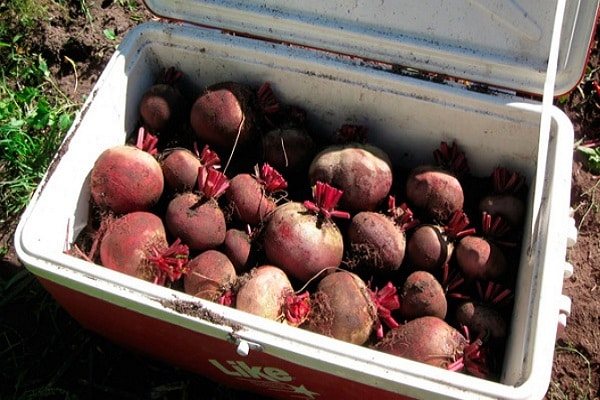

Housewives for all years of growing root crops use their own proven storage tricks. They recommend putting potatoes and beets in the same box. Moreover, the latter should be on top. How many days can vegetables be stored? Until mid-spring or longer.
Cleaning is a simple process, however, it requires adherence to the main points. Special attention is also paid to cultivation - care, watering and fertilization. If you adhere to the basic rules of collection and storage, you can enjoy fresh vegetables for a long time. Namely, before planting a seed for a new crop.




